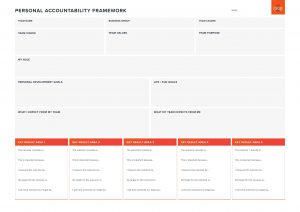
One of the first questions I ask a new client is ‘Do you have a business plan’?
The answers range from blank looks, to quick changes of topic, through to absolutely we have one.
Digging a little deeper, I often find that business owners who do have a plan, have not looked at it for a long time and openly admit that the plan is out of date.
Most businesses I work with are doing ok, they have plenty of work, great teams and have a good market presence. They can articulate the future for their business, but it is in the heads of the business owner or executive team and not written down anywhere.
Given what I was observing, I posed the question, is a business plan still relevant or is it a relic of the past? Is the time spent writing a business plan better spent on product development, establishing partnership opportunities, building sales funnels, etc. the ‘doing’ bits of running a business?
The first thing I did was to research to see the percentage of businesses who succeeded and have a business plan versus the percentage of businesses that failed and did not have a plan. I found plenty of information on the failure rate of businesses in the first 12 months, three years, etc. along with some commentary about the factors that combine to make a business unviable, but there was no hard statistics on the level of business planning versus business success or failure.
Given the current economic situation, statistics from the past will largely be irrelevant over the next few years anyway so I moved on.
The current disruption has changed planning timeframes, where previously businesses planned on a 12, six or three monthly cycle, they now need to be planning on a monthly on weekly basis as the legislative environment, business fundamentals and client expectations change rapidly.
Moving to a much smaller planning window poses a number of challenges, the main one being the need to capture and communicate the new plan and priorities to your investors, team and in some cases clients.
This is where the traditional business plan that sits in a folder on the shelf has its limitations, sending a business plan to your team to read and understand is fraught with failure. Let’s be honest, are you going to rush to open an email about a new business plan or rock up to a lunch meeting about the new business plan?
What if the critical information was taken out of the conventional business plan and put on posters that hung on the office wall for everyone to see? Posters that were engaging to look at, clearly communicated the key points of the business plan and facilitated discussion with the team about the plan moving forward.
In my opinion, this is the new way of business planning, creating a visual and engaging representation of the business that is easy to understand, creates engagement and importantly is easy to update.
The business landscape is changing rapidly, and businesses need to be agile to keep up and stay relevant. Businesses are only as agile as their team is at understanding, buying into and then implementing the new plan.
We have developed a suite of business planning templates and posters including:
- The What and Why Poster
- The Risk and Opportunity Poster
- The #GSD Poster
- The Team Charter Poster
- The Team Accountability Poster
- The Business Plan Template (for the old schoolers amongst us)
You can also book a strategy call with Craig to discuss your business and what you need to succeed.


